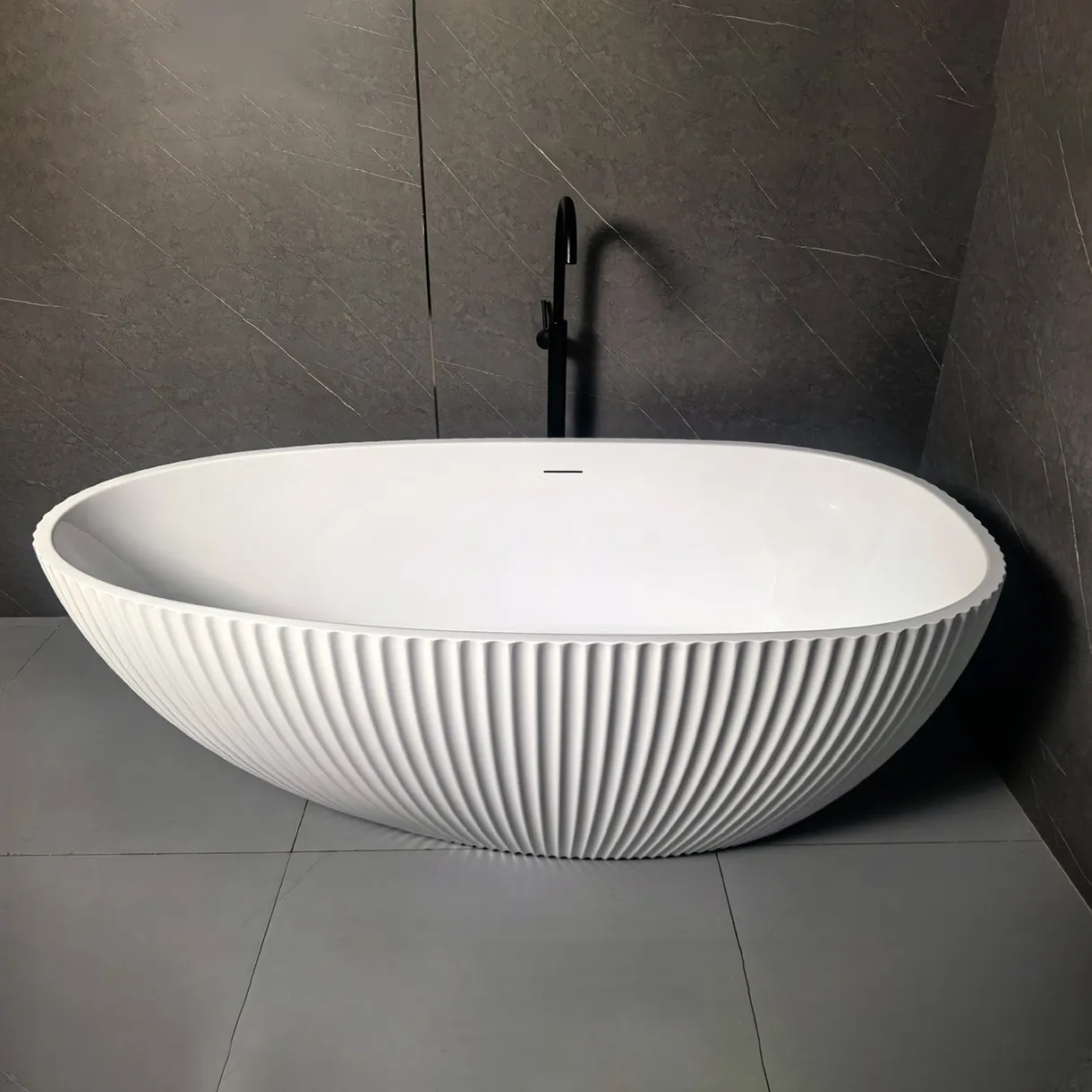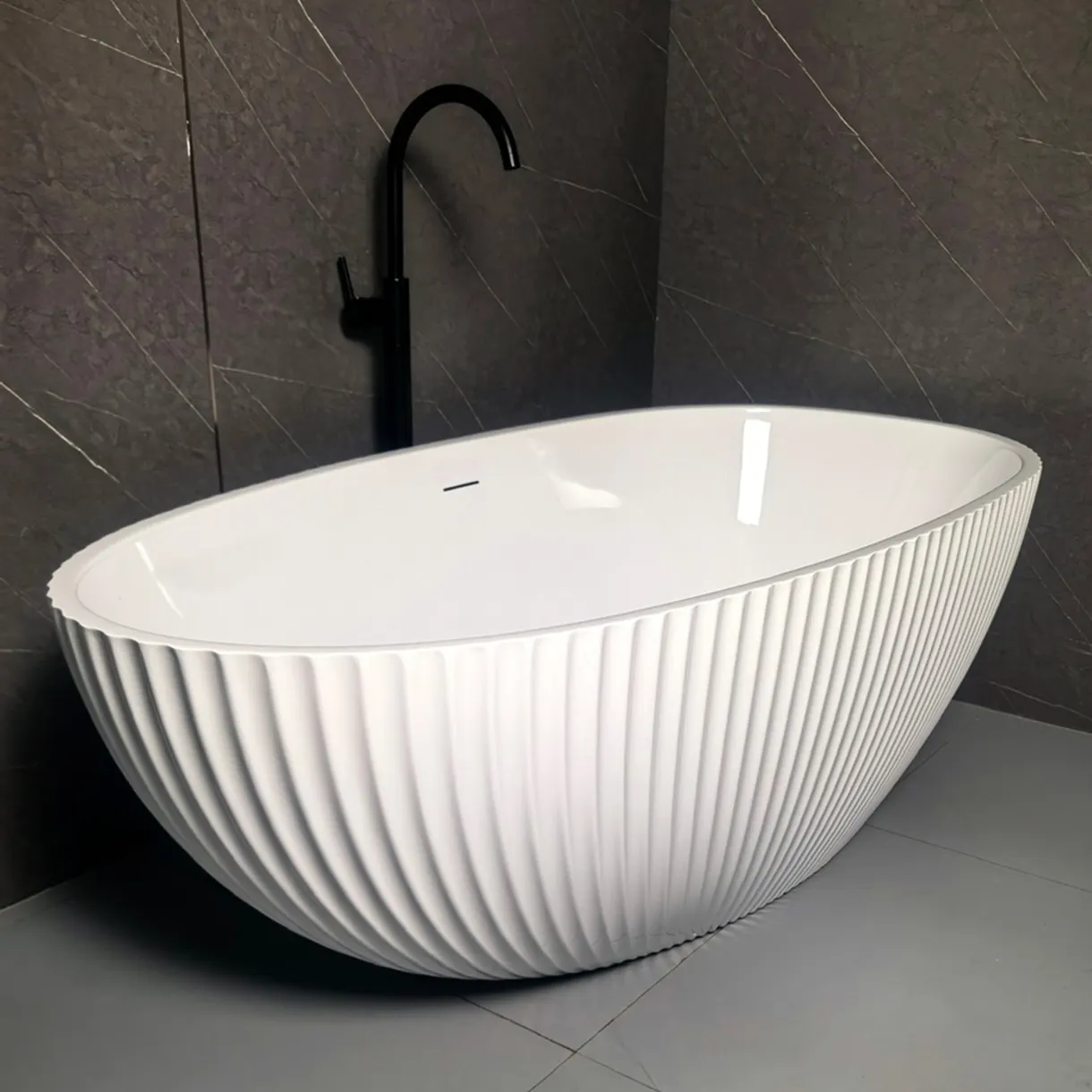Pasirinkimas tinkamos baseino ilgalaikiam patogumui
Pralobusios ir praktiškos maudymosi aplinkos kūrimas daugeliu atvejų priklauso nuo tinkamo pasirinkimo kavos dėmuo . Gerai suprojektuotas baseinas ne tik padidina patogumą, bet ir užtikrina ilgalaikį patikimumą. Arba atnaujinate vonios kambarį arba kuriate jį iš nulio, investicija į idealų kavos dėmuo gali žymiai pagerinti jūsų gyvenimo būdą ir jūsų nAMAI vertybę. Šiame gide aptariamos esminės medžiagos, dizaino inovacijos ir ergonomikos aspektai, kurie padės jums pasirinkti baseiną, siūlantį tiek funkcionalumą, tiek eleganciją.
Pagrindiniai elementai, apibrėžiantys aukštos kokybės baseiną
Medžiagos stiprumas ir atsparumas
Vertinant vonios kokybę, pirmiausia reikia atkreipti dėmesį į medžiagą. Yra įvairių variantų – akrilas, stiklo pluoštas, ketaus, akmens derva – kiekviena iš jų skiriasi pagal atsparumo ir šilumos izoliacijos lygį. Akrilo vonios yra lengvos ir atsparios įtrūkimams, todėl jos tinka moderniems namams. Ketaus vonios, nors ir sunkesnės, gerai išlaiko šilumą ir yra labai ilgaamžės. Akmens drožlių vonios sujungia ilgaamžiškumą su prabangiu išvaizda, sukuriant saunai būdingą jausmą, kuris išlaiko savo aktualumą ilgam laikui.
Paviršiaus apdaila ir priežiūra
Paviršiaus apdaila svarbi tiek estetikai, tiek priežiūrai. Lygus, neperšlamančias paviršius neleidžia augti pelėsiai ir palengvina valymą. Dėl blizgesio ir lengvos priežiūros populiarūs yra akrilo paviršiai. Tiems, kurie nori natūralesnio vaizdo, matiniai akmeninių ar kompozitinių medžiagų paviršiai gali suteikti modernaus, stilingo išvaizdos be higienos aukos.

Funkcijos, kurios padeda patogumui vonioje
Ergonomiškos formos ir gylis
Baseino patogumas dažnai nulemiamas jo formos ir matmenų. Ergonomiškai profiliuoti baseinai siūlo nugaros atramą, integruotus atlošus ir tinkamą panardinimo gylį. Gilesni baseinai leidžia visiškai panerti į vandenį, o tai idealu atsipalaidavimui. Kai kurių modelių nuožulnios vidinės sienelės gali sumažinti slėgį ant nugaros stuburo, dar labiau pagerinant baseino patirtį.
Integruota atrama ir priedai
Kad baseinas būtų dar patogesnis, verta apsvarstyti integruotus elementus, tokius kaip galvos atramos, laikymosi turėklai ir slidžių paviršių prevencijai. Šie elementai yra būtini šeimoms, kuriose yra vaikų ar vyresnio amžiaus žmonių. Priedai, tokie kaip baseino pagalvėlės, vežimėliai ir hidromasažo srovės, taip pat gali reikšmingai pagerinti kasdieninį naudojimą ir skatinti gerovę.
Baseinų stiliai, derinantys ilgaamžiškumą ir estetiką
Atskirai stovintis elegancija
Atskiri baseinai tapo dizaino akcentu daugelyje šiuolaikinių vonios kambarių. Šie baseinai yra prieinami iš įvairių medžiagų, kurios užtikrina tiek ilgaamžiškumą, tiek estetinį patrauklumą. Jų universalumas dėl išdėstymo leidžia namų savininkams pritaikyti išplanavimą pagal savo poreikius, todėl jie yra lankstus pasirinkimas remontui ar naujai statomoms patalpoms.
Nišos ir įstatomi modeliai
Nišos ir įstatomi baseinai puikiai tinka mažesnėms erdvėms ir intensyviai naudojamoms vonios patalpoms. Šie modeliai dažnai yra sustiprinti, kad būtų užtikrinta jų ilgaamžiškumas, o dėl uždaros konstrukcijos yra lengviau valomi. Pasirinkus tinkamas medžiagas, tokias kaip sustiprintas akrilas arba emaliuotas plienas, jie siūlo ilgalaikį sprendimą, nesumažinant patogumo ar stiliaus.
Inovacijos, kurios gerina baseinų funkcionalumą
Temperatūros išlaikymas ir energijos vartojimo efektyvumas
Modernios vonios yra sukurtos taip, kad ilgiau išlaikytų šilumą, todėl mažėja nuolatinio karšto vandens papildymo poreikis. Apšiltintos medžiagos, tokios kaip ketaus ir inžineriniai kompozitai, padeda pasiekti geresnį energijos naudingumo efektyvumą, todėl jūsų vonia yra tiek patogi, tiek ekonomiška. Kai kurios modeliai net turi šildomą atlošą arba įmontuotus šildytuvus, kad vanduo ilgiau išliktų šiltas.
Lengvas montavimas ir protingas dizainas
Montavimo paprastumas taip pat daro įtaką ilgalaikiam naudojimui. Lengvos medžiagos supaprastina montavimo procesą, todėl sumažėja darbo sąnaudos ir laikas. Modulinis dizainas ir reguliuojami kojeliai leidžia tiksliai išlyginti vonią, ypač esant nelygiam paviršiui. Kai kuriais atvejais vonios jau integruotos su protingų namų sistemomis, siūlančiomis lietimui valdomas valdymo pultelius arba balso valdymo funkciją vandens pripildymui.
Priežiūra ir ilgaamžiškumas kasdieniame naudojime
Atsparumas ausinimui ir išlaidimui
Didesniuose, daugiau naudojamuose vonios kambariuose reikia vonių, kurios atlaikytų kasdienį panaudojimą ir nesidėvėtų. Rinkitės modelius su sustiprinta apačia, UV spindulių atspariomis danga ir nubrozdinimams atspariomis paviršių. Ilgainiui tokie elementai neleis voniai nusispalvoti arba susidėvėti, išlaikant jos išvaizdą ir funkcionalumą.
Valymas ir dezinfekavimas
Palaikyti higieną yra svarbu kiekvienai voniai. Pasirinkite modelius, kurie atstumia vandenį ir atsparūs muilo nuosėdų kauptimuisi. Kai kurios aukščiausios kokybės vonios turi antibakterinę dangą arba savaime valančias technologijas. Mažiau priežiūros reikalaujantis paviršius sumažina valymo dažnumą ir intensyvumą, leidžiant daugiau laiko skirti atsipalaidavimui.
Vonių pasirinkimo pritaikymas prie gyvenimo būdo poreikių
Šeimoms draugiški sprendimai
Šeimoms su vaikais idealus yra vonia su apvaliais kraštais, sekliomis įėjimo vietomis ir slidžių paviršių. Nišos formos vonios dažnai atitinka šiuos reikalavimus ir siūlo papildomą privalumą – įmontuotus lentynas vonios žaislams ir reikmenims. Ilgaamžės medžiagos taip pat užtikrina, kad vonia ilgą laiką išliks puikioje būklėje, nepaisant intensyvaus naudojimo.
Spa poveikis namuose
Jei atsipalaidavimas yra svarbus, apsvarstykite vonią su srautų sistema, chromoterapijos apšvietimu ir ergonomiškomis formomis. Šios prabangos savybės paverčia paprastą vonią kasdieniu pabėgimu. Daugelis šių dienų vonių atitinka gerovės mėgėjų poreikius, siūlydamos terapinį poveikį, tačiau išlieka lengvai priežiūros ir vizualiai patrauklios.
Dizaino aspektai moderniems interjerams
Spalva, forma ir tekstūra
Šių dienų baseinų dizainas išeina už tradicinio baltos kriauklės porceliano ribų. Matinės juodos, akmenų tekstūros ir pasirinktinės spalvos baseinai vis dažniau pasitaiko moderniųose vonios kambariuose. Forma taip pat prisideda prie estetikos – ovalūs, asimetriški ir stačiakampiai modeliai leidžia be jokio reikalo prisitaikyti prie įvairių interjero stilių.
Integracija su kitais vonios kambario elementais
Gerai parinktas baseinas turėtų perteikti visą vonios kambario planavimo harmoniją. Apsvarstykite, kaip baseinas derės su komodais, grindimis ir apšvietimu. Daugelis namų savininkų renkasi baseinus, kurie atitinka čiaupų arba plytelių apdailą, kad būtų sukuriama vientisa dizaino koncepcija. Integruotas LED apšvietimas arba minimali technika gali dar labiau padidinti bendrą efektą.
Dažniausiai užduodami klausimai
Koks yra geriausias ilgaamžiškam baseinui tinkamas medžiaga?
Liejimo geležis ir akmens derva dažnai laikomos patikimiausiomis medžiagomis. Jos gerai išlaiko šilumą ir atsparios nubrozdinimams, todėl yra ideali ilgalaikiam naudojimui.
Kaip užtikrinti, kad mano baseinas ilgam laikui išliktų patogus?
Pasirinkite modelį su ergonomiškomis savybėmis, aukštos kokybės medžiagomis ir tinkama izoliacija. Reguliarios priežiūros ir valymas taip pat padeda išlaikyti patogumą.
Ar verta investuoti į prabangos funkcijas, tokias kaip srovės čiurkšlės ir apšvietimas?
Taip, ypač jei vertinate atsipalaidavimą ir terapinį poveikį. Šios funkcijos gali paprastą baseiną paversti į spa poveikį darančią patirtį ir padidinti Jūsų namų vertę.
Koks yra aukštos kokybės baseino vidutinis tarnavimo laikas?
Tinkamai prižiūrint, gerai pagamintas baseinas gali tarnauti 15–25 metų ar ilgiau, priklausomai nuo medžiagos ir naudojimo intensyvumo.
Turinio lentelė
- Pasirinkimas tinkamos baseino ilgalaikiam patogumui
- Pagrindiniai elementai, apibrėžiantys aukštos kokybės baseiną
- Funkcijos, kurios padeda patogumui vonioje
- Baseinų stiliai, derinantys ilgaamžiškumą ir estetiką
- Inovacijos, kurios gerina baseinų funkcionalumą
- Priežiūra ir ilgaamžiškumas kasdieniame naudojime
- Vonių pasirinkimo pritaikymas prie gyvenimo būdo poreikių
- Dizaino aspektai moderniems interjerams
- Dažniausiai užduodami klausimai

